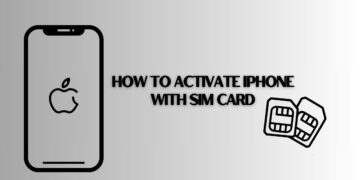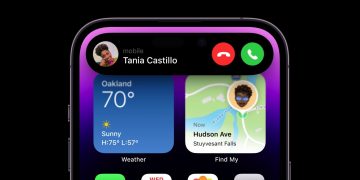For years, we’ve been promised the end of password-based logins. Now the reality of a passwordless future is taking a big leap forward, with the ability to ditch passwords being rolled out for millions of people. When Apple launches iOS 16 on September 12 and macOS Ventura next month, the software will include its password replacement, known as passkeys, for iPhones, iPads, and Macs.
Passkeys allow you to log in to apps and websites, or create new accounts, without having to create, memorize, or store a password. This passkey, which is made up of a cryptographic key pair, replaces your traditional password and is synced across iCloud’s Keychain. It has the potential to eliminate passwords and improve your online security, replacing the insecure passwords and bad habits you probably have now.
Apple’s rollout of passkeys is one of the largest implementations of password-free technology to date and builds on years of work by the FIDO Alliance, an industry group made up of tech’s biggest companies. Apple’s passkeys are its version of the standards created by the FIDO Alliance, meaning they will eventually work with Google, Microsoft, Meta, and Amazon’s systems.
What Is a Passkey?
Using a passkey is similar to using a password. On Apple’s devices, it’s built into the traditional password boxes that websites and apps use to get you to log in. Passkeys act as a unique digital key and can be created for each app or website you use. (The word “passkey” is also being used by Google and Microsoft, with FIDO calling them “multi-device FIDO credentials.”)
If you are new to an app or a website, there’s the potential that you can create a passkey instead of a password from the start. But for services where you already have an account, it’s likely you will need to log in to that existing account using your password and then create a passkey.
Apple’s demonstrations of the technology show a prompt appearing on your devices during the sign-in or account-creation phase. This box will ask whether you would like to “save a passkey” for the account you are using. At this stage, your device will prompt you to use Face ID, Touch ID, or another authentication method to create the passkey.
Once created, the passkey can be stored in iCloud’s Keychain and synced across multiple devices—meaning your passkeys will be available on your iPad and MacBook without any extra work. Passkeys work in Apple’s Safari web browser as well as on its devices. They can also be shared with nearby Apple devices using AirDrop.
As Apple’s passkeys are based on the wider passwordless standards created by the FIDO Alliance, there’s the potential that they can be stored elsewhere, too. For instance, password manager Dashlane has already announced its support for passkeys, claiming it is an “independent and universal solution agnostic of the device or platform.”
While Apple is launching passkeys with iOS 16 and macOS Ventura, there are several caveats to its rollout. First, you need to update your devices to the new operating system. Second is that apps and websites need to support the use of passkeys—they can do this by using the FIDO standards. Ahead of Apple’s updates, it isn’t clear which apps or websites are already supporting passkeys, although Apple first previewed the technology to developers at its developer conference in 2021.
How Do Apple’s Passkeys Work?
Under the hood, Apple’s passkeys are based on the Web Authentication API (WebAuthn), which was developed by the FIDO Alliance and World Wide Web Consortium (WC3). The passkeys themselves use public key cryptography to protect your accounts. As a result, a passkey isn’t something that can (easily) be typed.
When you create a passkey, a pair of related digital keys are created by your system. “These keys are generated by your devices, securely and uniquely, for every account,” Garrett Davidson, an engineer on Apple’s authentication experience team, said in a video about passkeys. One of these keys is public and stored on Apple’s servers, while the other key is a secret key and stays on your device at all times. “The server never learns what your private key is, and your devices keep it safe,” Davidson said.
Source by www.wired.com






























